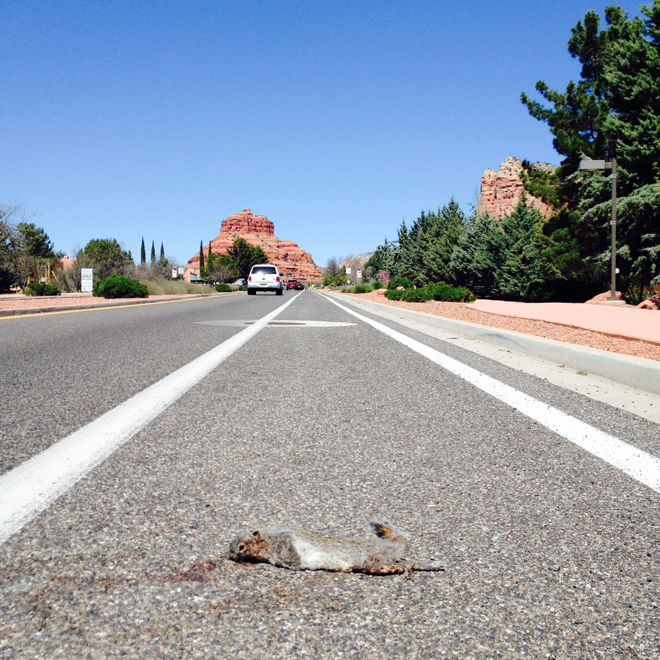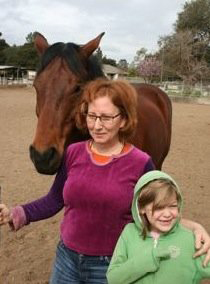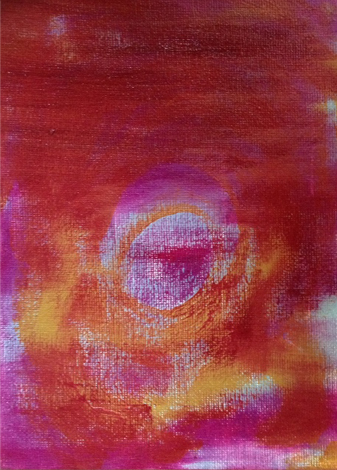April 2015, Issue #2
FRAGILE ONGOING
TABLE OF CONTENTS
Editorial
I. OPENING REMARKS
Jan Clausen
“This Moment the World Continues”: Writing under the Sign of Species Suicide
Robin W. Kimmerer
When Earth Becomes an ‘It’
Kathleen Dean Moore
The Rules of Rivers
II. GRIEVING
Cynthia Travis
The Music of Grief
Megan Hollingsworth
Pacific
Ruth Wallen
Cascading Memorials: Public Places to Mourn
Joan Kresich
Letter to a Yellowstone Wolf
Susan Marsh
Elegy for the Cranes
 The Hunters
The Hunters
Karla Linn Merrifield
William Bartram Triptych
Dana Anastasia
trinkets
Gillian Goslinga
To Witness
III. GUIDED
Deena Metzger
Dreaming Another Language: She Will Not Kill
Alexandra Merrill
Homage to Bees
Sheila Murray
Infiltration
 Prey
Prey
Judy Grahn
Dragonfly Dances
Laura D. Bellmay
A Call from the Edge
Carolyn Brigit Flynn
Grandmother Squirrel
Nora Jamieson
Fleshing the Hide
Sara Wright
Cardinals at the Crossroads
Valerie Wolf
Dreaming the Future
Gillian Goslinga
To Witness
Fragility
I am driving along a scenic road in Sedona County, Arizona, its famed red rocks flanking the winding road on either side and in the distance. A sign announces the beauty ahead, inviting drivers to raise their eyes above the road to look about. Wisps of yellow grass brighten the slopes up to the awesome rock formations around me, the yellow broken by dark green junipers and pines, fanciful clusters of purple cacti, and rich deep ochre earth. I am enchanted.
Around a curve, the mangled corpse of a hare on the road makes me swerve. Around another curve, further down, another corpse, a coyote this time, its skull crushed and jaw lying flat on the pavement, its body contorted by impact, like a gruesome trophy carpet. I swerve again, feeling a pang in my belly. I count a third little nondescript creature crushed further down these five miles of scenic views.
But what a rush the landscape gives! All I have to do is raise my eyes to the horizon to be enchanted again. I imagine that other drivers feel this same hypnotic elation too, eyes and hearts raised beyond our windshields to the sublime on this God-given corner of Mother Earth. The corpses of the animals who didn’t make it across the road fast enough jar these good feelings, if you see them at all. Maybe you swerve to avoid crushing the bodies a second time, as I just did, thinking yourself lucky that it wasn’t you that crushed them in the first place. If you have a heart, you feel a pang of pity.
On mornings like this, when one corpse after another greets me on the tarmac, I ache to do ceremony for these fellow creatures whom we call, with sick humor, “road kill.” I have many times imagined erecting little crosses along the roads, bright with flowers and the recognition of death, as is done for human victims of accidents, who incidentally are never called “road kill.” I always say a prayer for their souls’ safe journey home. But are prayers enough?
Next day, same hour, same scenic stretch.
The road is picture-perfect again. All three corpses have vanished, leaving not a trace of blood or bone or fur. Courtesy of the Sedona municipality and our tax dollars, the red rock vistas can again rejoice the vision and hearts of drivers from behind the looking glass of a car’s windshield, without stain of death. All is forgotten.
I think: if all the corpses of road kill on that scenic road were to be piled up along the side of the road, they would surely rise higher on each side of the tarmac than the graceful yellow grasses that delight with their movement and wispy color. Would a forest of crosses bright with flowers do these deaths’ justice? What kind of witnessing would this be, truly? Are pangs of pity and gazes of recognition enough?
To witness
I want to turn the concept of witness on its head.
I have prided myself on being a witness to these road- kill with my prayers and my thoughts of ceremony. The harsher truth is that I have not once stopped to honor the dead ones.
The wanton corpses of creatures killed as they travel the tracks of their lives are witnesses to the wanton narcissism of my breed of humans. To privatize my sorrow - I have a heart thank God! - is to re-enact the very narcissism that built this scenic road that cuts through the land and the tracks of others without consideration or respect. The pang of grief I feel is not only my own; it is the pain of a covenant that has been broken. Bad deaths hurt not just the animals or my sense of righteousness, they hurt life itself.
I have read in Deborah Bird Rose’s Reports from A Wild Country that a band of Victoria River Australian Aboriginals camp “on the blood and bones of their people that had been murdered” at Kinbarra by colonizers at the turn of the 19th century (2004:56). The camping is neither protest nor memorialization. The band keeps their murdered ancestors company during daily living and remembers them, because they loved their kin and their kin loved them, and that is what those unjustly killed need most, the company of loved ones. Camping on the bones is not proof of a greater humanity, Bird Rose insists, but is an action that repairs what was violently torn asunder in the matrix that is country, the place where one is born and dies in the company of others. She explains, “If people decided to cease to tell the stories of what happened, the implication could be that the deaths and the pain no longer matter.” (57) Wrongful death doesn’t want to be memorialized. It wants to be kept company with.

It’s hard to look at a photo like this without feeling rude and voyeuristic. In Wild Dog Dreaming, Bird Rose describes how she comes to a tree along a road on which dead Dingos – all poisoned – are hung like Christmas ornaments. After the initial shock and horror – “God, where are you here?” she hears herself cry out – she just looks, reaching beyond feelings of shame and guilt. Something transforms in her, beyond the horror and the anguish. She takes each animal in, an honoring. There is something respectful in looking this way. We don't know how to do it. Certainly don't know how to sit with death and especially not with gruesome death in quiet dignity.
To be called into relationship
In her most recent book, Wild Dog Dreaming (2011), Deborah Bird Rose writes about what it takes to call us humans into relationship with our Earth’s others. She says that we must locate “an ethical call-and-response within the living reality of life” (29, emphasis mine) rather than in the abstract spaces of the mind, or of a heart that has been made abstract by narcissism.
This has been my point so far: An emotional witnessing of the suffering of others can be as ineffective as thought, no matter how intense or sincere the felt emotion. Unless I am honestly present with what has transpired—e.g. roads that cut through the tracks of others without respect or consideration—I will not know how to respond in kind, in a way that repairs what has been breached. Love, in Deborah Bird Rose’s account, is what sparks in us the ability to respond in kind to the presence and needs of others. Love is what awakens us to the life-worthiness of others in death and in life, and calls us into right relationship with them. This kind of love is rooted in knowing how to keep company with. This kind of love is the antidote to narcissism.
I wonder what I would come to know if I did stop and keep company with the dead on the scenic road out of love rather than pity. I wonder what I would come to know about what they need. I wonder what I would feel sitting next to them as cars drove by and drivers stared at us.
I think: Being in right relationship with has to be the first step of ceremony. Listening to what the other needs, in death as in life. Let ceremony begin from that listening. Let all witnessing begin in the here-now of keeping-company-with.
To keep company with
The tyranny of narcissism is a disconnection so profound that one cannot see the other as it presents itself, in its living fullness, as kin. A long European civilizational history has turned our animal kin into surfaces for our narcissism. This history has twisted the meanings of reciprocity so much that the ground for being kin has slipped away. I remember when this ground was restored for me, in a way that I could fully comprehend. Here is the story.

Hank was a horse bought at auction. I met him at the Mitchell Ranch in Watsonville, CA, where I had taken refuge in the aftermath of a nasty divorce. He was big and handsome, a Percheron Thoroughbred mix, bay in color with a thick black mane and a single white sock on his left hind leg. A beautiful horse by any standard. I liked him immediately. One morning I came upon him in a new paddock. The paddock was long and narrow with two apple trees in its enclosure. Hank stood at the far end looking at me inquisitively, his head lowered. I was suddenly overwhelmed with the desire to enter the paddock and climb on his back. “You’re crazy,” I thought to myself. Four weeks earlier I had been bucked off a mare I did not know well and had broken a rib. But the feeling persisted, strong and clear and urgent. The feeling was a picture, too, of me straddling his bare back. I looked around for his halter and rope but could see none. “You’re really crazy,” I thought to myself as I stepped into his paddock, empty-handed.
Hank slowly and deliberately walked towards me, then swerved to stand alongside side the railing as if to say: “This is how you can get on top of me.” With butterflies in my stomach, I climbed the railing and slipped on top of him, straddling him bareback just as I’d seen in my mind’s eye. I grabbed his mane, nervously. Hank moved away from the fence and walked up to one of the apple trees. Dangling within arm’s reach was a cluster of bright red apples that he could not reach on his own.
I burst out laughing, relaxing all the way down to my toes. My overwhelming desire to enter into his paddock and climb on top of him had been his idea! A communication. Hank had needed me to pick the apples he couldn’t reach on his own. I happily obliged, plucking one apple after another, and reaching down to feed them to him. Then one big, fat apple fell from my hand to the ground, rolling under the tree. Hank went to fetch it and, panic surging through my body again, I found myself getting tangled in the branches, my feet coming up along his face to his ears as I was forced to lie back, a recipe for disaster.
But Hank grew still, listening to my panic. Slowly he lowered himself and stepped aside and back, allowing me to grab a branch and slip off his back, and then to the ground, safely. I turned around to face him in amazement. He was facing me, too, looking me straight in the eye, softly. My heart skipped a beat as he playfully stepped towards me, making me step back with his lowered head. He took another step forward and I took another step backwards, and then still another. Losing my footing, I looked down to see where to put my feet on the bog. Perched between us in perfect formation was a crow’s feather, pointing straight from me to him, as if placed on the bog by an invisible hand. Tears welled in my eyes and I felt such a seizing of my heart that I knew beyond the shadow of a doubt that this horse was deeply kindred to me, a long-lost friend. My Feather Spirit.
To know oneself as kin is to share an intimacy that is personable, right-sized, where the other, whatever its form, in life or in death, is its own singular being. I want to say that this intimacy, this kindred-ness, this being called into relationship and keeping-company-with, is the space of witnessing.
Another story: In 2009 I went on a vision quest on Mount Shasta at six thousand feet. I was allowed only a tarp and a sleeping bag and water from the mountain’s spring. I chose to set up camp in the hollow of a cluster of trees where the slope of the mountain had evened enough for my body to lay flat. I froze the first night. The second night I found myself cold again as the sun lowered in the sky. I slipped into my sleeping bag to keep warm, thinking it a shame that I would have to spend the whole evening bundled up like this.
My face was level with the edge of the forest, and my gaze level with a very long dead tree trunk lying in the clearing between forest and my camp. As I thought my despondent thoughts about the cold, a ground squirrel darted out of the woods into the clearing. The little creature leapt onto the fallen tree and, settling into a sunny spot, rounded and stretched its furry back precisely to the setting sun, soaking in the last rays. We locked eyes. A flash of understanding washed over me. To keep warm, I was to pile on my clothes and round my back to the sun in the warmest spot I could find on the slope, just as my little friend was showing me to do. I put on all the clothes I had, found a sunny spot of my own, and, rounding my back, I soaked in the warmth of the sun until it went down. And that evening I wasn’t cold, or the next.
I had other encounters with ground squirrels during the four days of the vision quest. Each time they communicated something of vital importance to my well-being. To listen, I had to trust the flash of understanding that washed over me and take their actions at face value. I had to be willing to mimic them. A ground squirrel hung out with me at the mountain spring two days in a row when I refilled my water gourds. One afternoon he warned me of the impending arrival of a group of rambunctious male hikers by scurrying away after catching my gaze as the squirrel on the log had. I too scurried away, just in time to avoid their loud and jarring arrival at the spring and noisy joking about conquering the summit. I was filled with humble gratitude and a feeling of solidarity with these Earth Others who had shown themselves to be in solidarity with me.
My four days on the mountain were filled with gracious and unexpected reciprocity with many creatures besides ground squirrels, as my tracks crossed with theirs and theirs with mine. Just as Feather Spirit had called me into relationship with him, so too did each of these creatures, and they kept company with me when I was willing to listen. Only good came from keeping company like this.
Reparation
I have yet to stop along the scenic road to honor and keep company with the dead. I want to. But I think reparation before the fact would be a better idea. I have heard that in the Dakotas, courtesy of taxpayer dollars, tunnels are now being dug beneath highways and roads at regular intervals to ensure the safe crossing of animals large and small for whom the Dakotas are also home. This is reparation that matters, where the human has witnessed the needs of fellow creatures and learned to keep company with them in life.

Gillian Goslinga is a cultural anthropologist and a critical humanities scholar. She teaches at a liberal arts school on the East Coast and is friends with a mare, Luna, in addition to Feather Spirit. The last six years have seen her struggle with a parade of environmental illnesses: chronic Lyme and mold neurotoxicity to begin with, and as her nervous system degenerated, multiple chemical sensitivities (MCS) and electro-magnetic frequencies sensitivities (EMFS). Finding safe housing and working spaces has been an ongoing challenge. These illnesses affect the frontal cortex and limbic system, and so scramble at times her capacity for language, recall, and meta-cognition. At those times, Gillian turns to painting. “Eye” is what she painted as she reached a point of not being able to work on her piece for this volume. The eye that painted itself in the image is the Eye of the Storm but also the Eye That Witnesses, that simply takes in what is, with calm. Gillian wishes to thank Lise Weil for walking with her every step of the way as this piece got written, and especially for holding space for its clarity and coherence.
Want to comment on any Issue of Dark Matter, fill out the form here.
Copyright © 2014-2021 Dark Matter: Women Witnessing - All rights reserved to individual authors and artists.
Email: Editor@DarkMatterWomenWitnessing.com
Please report any problems with this site to webmaven@DarkMatterWomenWitnessing.com
